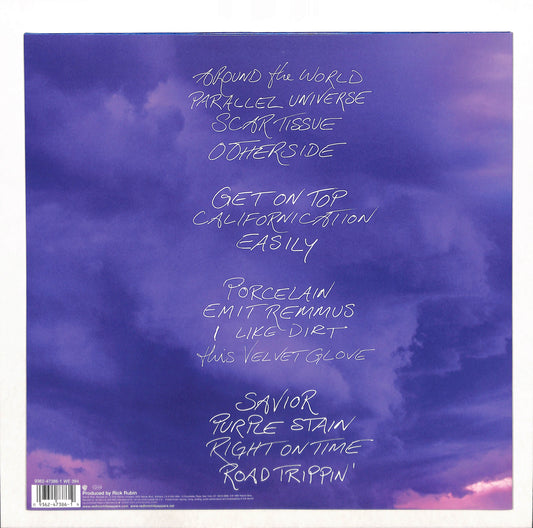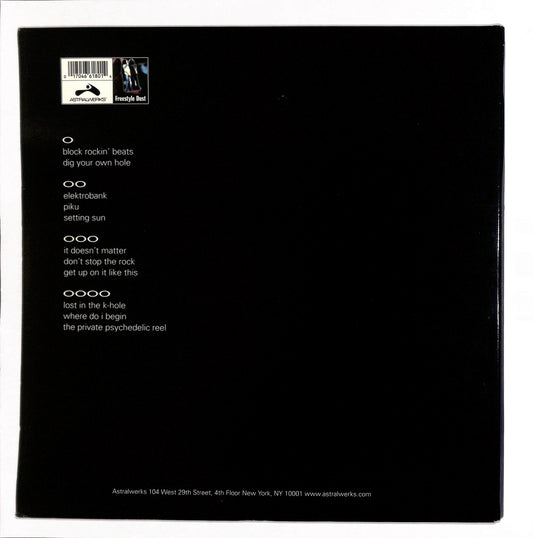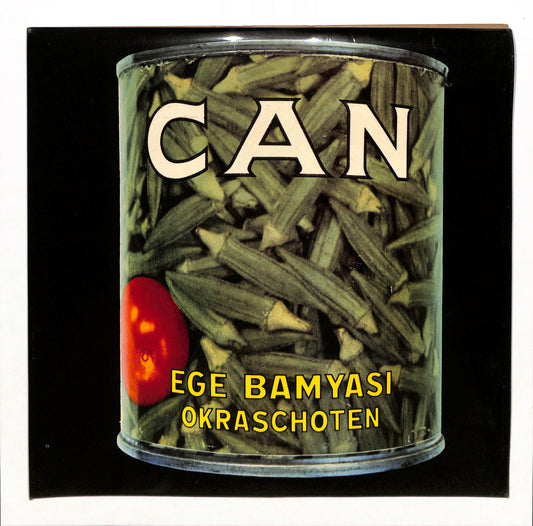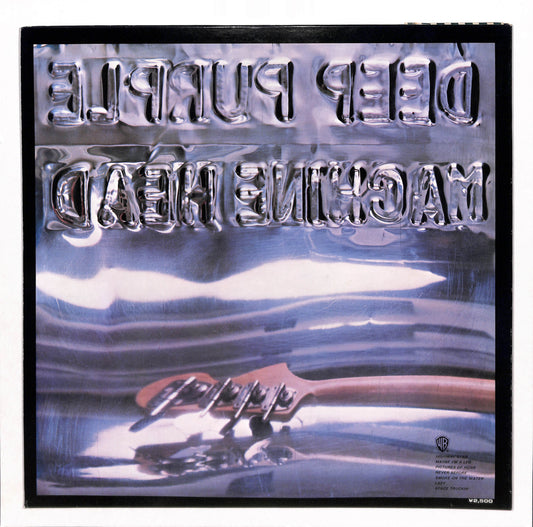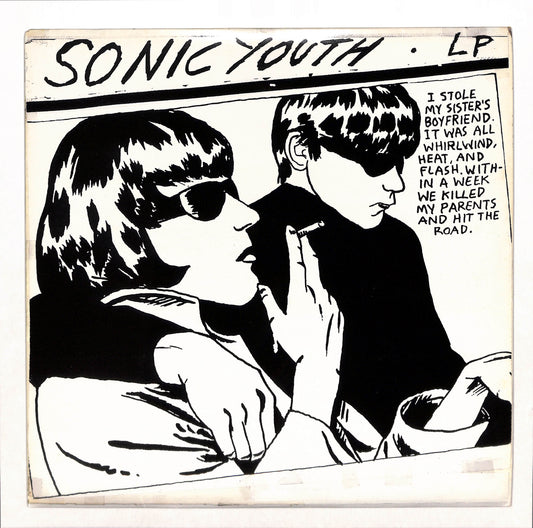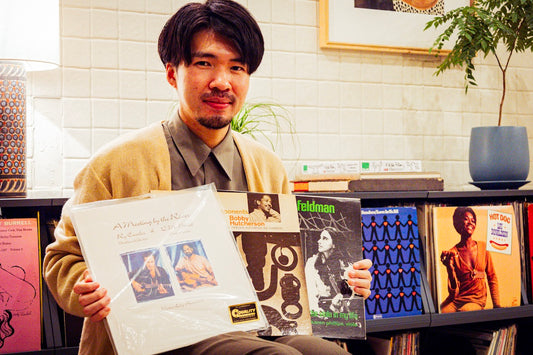"WHAT'S IN YOUR CART?" is an interview series where we invite record-loving guests to choose '5 Records They Want Right Now' from the ELLA ONLINE STORE lineup.
This time, we’re joined by Okamoto Reiji, drummer of OKAMOTO’S, who is celebrating their 15th anniversary and currently in the middle of an extensive tour across Japan’s 47 prefectures. On January 22, 2025, the band will also be releasing their 10th original album, 4EVER, marking a truly memorable year.
Reiji, who is also in high demand as a DJ at various events, selected five records from the ELLA RECORDS VINTAGE shelves: three that had a massive impact on him during his teenage years, and two that he “wasn’t into before but might appreciate now.” While Reiji usually relies on intuition to pick up unheard records at shops, he humorously mentioned, “If I did that, I wouldn’t be able to say anything about them, so I figured it wouldn’t work for an article!” With this approach, his choices offer a unique perspective. Though he laughs and describes it as a "beginner’s lineup," the interview reveals his deep musical knowledge in surprising ways. Prepare to be captivated by Okamoto Reiji’s lovable music-obsessive side!
Interview & text: Mikiya Tanaka (ELLA RECORDS)
Photo: KenKen Ogura (ELLA RECORDS)
Furniture design & production, Interior coordination: "In a Station"
Special thanks to: Satoshi Atsuta
OKAMOTOREIJI (OKAMOTO’S) "5 Records I Want Right Now"
①Red Hot Chili Peppers / Californication(1999)EU edition
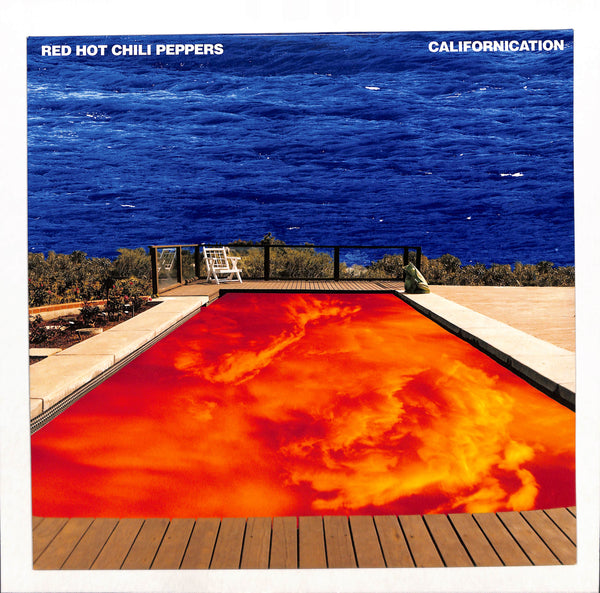
By the way, I recently went to the second day of their Tokyo Dome show, and they had a ton of equipment issues. I was seated near the front and could see John Frusciante looking offstage, clearly frustrated, from the very first song. He was visibly mad throughout the show, and weirdly, that felt encouraging to me! Just because they’re a world-dominating monster band doesn’t mean they’re immune to issues—they’re still like any band, and John gets pissed off, too! Watching Chad and Flea jump in with impromptu jams to cover for him was absolutely awesome.
②The Chemical Brothers / Dig Your Own Hole(1997)US edition
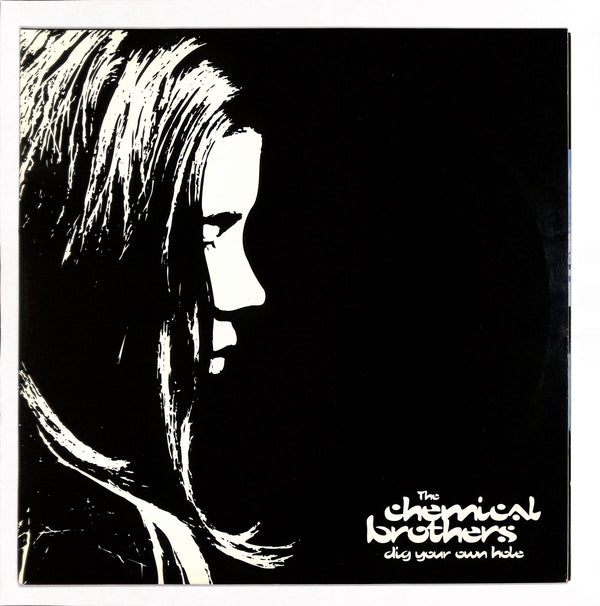
I listened to this Chemical Brothers album nonstop when I was in middle school, and it had a huge impact on my drumming. I practiced a lot of phrases like the drum break at the start of “Lost In The K-Hole” (D1), so the songs I wrote back then had some pretty strange drum patterns. Keith Moon (from The Who) and the Chemical Brothers were two of my biggest influences at that time. Recently, I’ve been feeling the urge to revisit artists from the 90s who helped shape that era’s culture.
Speaking of the 90s, I’ve been super into a YouTube channel called “Nagano CHANNEL” lately. I don’t think I’ve ever seen anyone as genuinely obsessed with rock as he is. Watching his videos really gets me pumped up. Lately, I’ve been listening to his videos on my way home from the station and picking up my guitar as soon as I get home. It’d be fun to have Nagano-san as a guest for this project, don’t you think?
③Can / Ege Bamyasi(1972)UK original
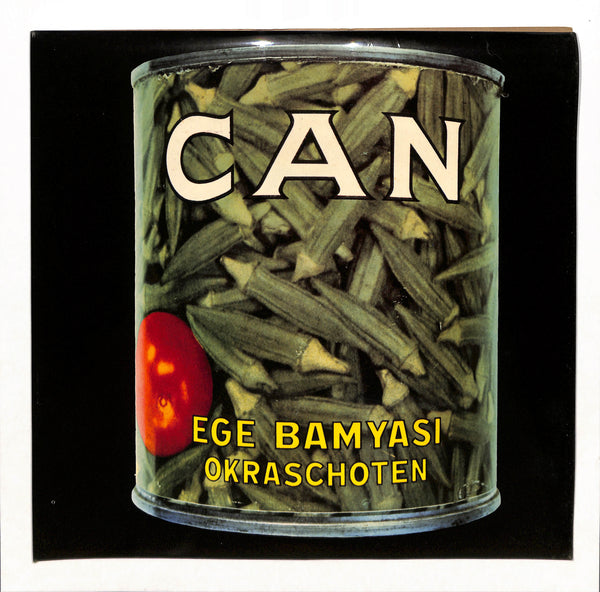
I listened to Can nonstop in high school, so Jaki Liebezeit’s drumming had a big influence on me. I’m also a huge fan of Neu!'s hammer beat, so Klaus Dinger’s style has also left a major mark on me. Back then, I was about as rebellious as it gets—while everyone else in high school was listening to Asian Kung-Fu Generation or Quruli, I was tuning into Amon Düül and Manuel Göttsching. Looking back, it’s probably nothing to brag about! (laughs)
The beauty of Can is that, despite doing really complex things, they don’t sound complicated. They’re incredibly pop in their own way. Part of that’s probably thanks to Damo Suzuki’s iconic vocals, but it’s interesting how this seemingly difficult, intricate music is still so listenable. And Can’s album artwork is awesome, too. I bought their CD box set in the shape of a can when it came out, and I still have it on display in my room. Everyone who visits has a reaction to it.
④Deep Purple / Machine Head(1972)JPN Edition
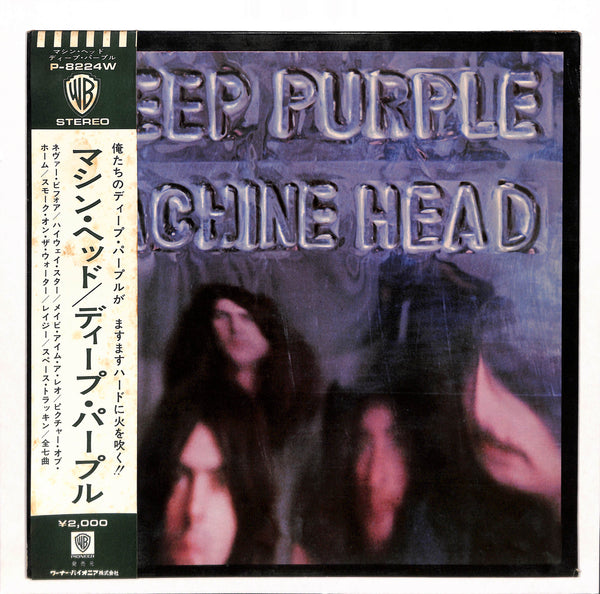
One of the albums I “wasn’t into before but might appreciate now” is this one. The other night, just as I was getting into bed, I suddenly thought, “Maybe I’d like hard rock and metal now.” So I started streaming playlists in that genre, and it ended up keeping me awake until 5 a.m. (laughs). After hours of listening, I felt like I could almost get into bands like Deep Purple or KISS. I could even imagine throwing one of their tracks on during a DJ set and getting a good reaction. But Metallica? I didn’t get it at all. Their sound felt distant—maybe I don’t like their recording style? I actually love Motörhead’s Ace of Spades, so I find it strange that some hard rock feels awesome to me, but other bands just don’t.
Anyway, even though I still don’t totally get it, I picked Deep Purple’s Machine Head. The album cover just looks cool. …Oh, it has “Smoke on the Water” and “Highway Star” on it. So, I guess it’s a classic! (laughs)
⑤Sonic Youth / Goo(1990)US original
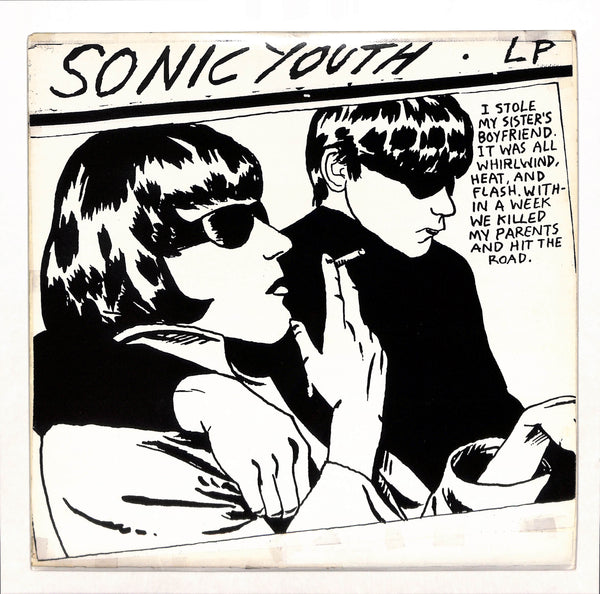
This is also one of the "never really interested before" picks. It might be surprising, but I actually haven’t listened to Sonic Youth at all. I’ve got a pretty specific taste, so there are quite a few big names I haven’t explored. I think I skipped Sonic Youth because I went straight into intense noise and avant-garde stuff, sort of skimming past what I “should” have checked out.
So I started wondering what it would be like to see this live, and I ended up going all the way to Fuji Rock just for Kim Gordon. It was a crazy schedule—I went from a work trip in Okayama straight to Naeba, and then took the first train back the next morning. Given her age, I thought this might be my only chance to see her perform live. And the show was incredible, full of respect for both rock and hip hop. For instance, during the song “BYE BYE,” the bassist started out on synth bass and the drummer kept things restrained on a closed hi-hat, even in moments where you could tell he wanted to go all out. Then, finally, toward the end, the bassist switched to live bass, and the drummer broke out the ride cymbal. I was so moved by that moment. They used synth bass and closed hi-hat for the hip hop sections and live bass with a ride cymbal for the rock parts, making clear distinctions within a single song. It showed a deep respect for both genres. Personally, I don’t like using a ride cymbal in hip hop—it has this energy that feels more suited to rock. Hip hop, born from a machine-based, ghetto culture, feels more authentic to me without that shimmering cymbal sound. Seeing their performance and realizing they shared that same approach got me really excited. I’m so glad I got to share that feeling today—no one’s ever really understood that until now! (laughs)
So, I feel like I could really get into Sonic Youth now. I don’t even know which album is considered their best, but I chose this one with the iconic cover. I was once at the New Museum in New York for a Raymond Pettibon exhibit, and I saw this album cover there. I was shocked to learn that it was Pettibon’s work too.
Interview: OKAMOTOREIJI and Records

━━The idea of selecting records under the theme “I wasn’t into it before, but I think I’d like it now” is really intriguing. You have a deep taste, like listening to Krautrock as a high schooler, but also mentioned that there are quite a few well-known artists you haven’t explored. I’d love to hear more about your musical journey. Could you tell us a bit more?
REIJI: Some big names I haven’t gotten into include Bob Dylan, Patti Smith, The Stone Roses, Oasis, Radiohead, My Bloody Valentine, and Beck. I guess I just missed the timing to check them out. I only know “This Charming Man” by The Smiths. But for some reason, I love Prefab Sprout! (laughs) My taste is skewed in strange ways like that. By the way, If You Don’t Love Me by Prefab Sprout would definitely make my top five songs to listen to for life. The strings version that’s only on the 7-inch is amazing, and I play it in my early morning DJ sets.
━━I’m so glad to hear you’re also a fan of Prefab Sprout! Why do you think your listening habits became so uniquely skewed like that?
REIJI: It’s partly because of my naturally contrarian personality and also due to the influence of friends I met along the way. My introduction to Krautrock, for example, was through meeting Taigen Kawabe from Bo Ningen. Back in high school, I was in something like a rock society as well as the brass band. Taigen was an alumnus, about five or six years older, who came to one of our brass band camps as an OB. He’s always been exactly the way he is now, and I thought, “Whoa, I bet we’d get along.” So I started talking to him, and we became super close. Then, out of nowhere, Taigen started introducing me to extreme stuff like Yamazaki Maso (MASONNA) and Hanatarash (laughs). I think that path eventually led me into Krautrock, noise, and avant-garde music.
━━That’s definitely an extreme introduction! (laughs) What kind of music were you into before that?
REIJI: Up until around eighth grade, I liked the kind of Western music that everyone goes through—stuff like Green Day’s American Idiot (2004), Linkin Park’s Meteora (2003), Good Charlotte, and Sum 41. Then in ninth grade, I bought Red Hot Chili Peppers’ Greatest Hits (2003), the one with the lips on the cover, and I got totally hooked. I started buying back issues of magazines like CROSSBEAT that had RHCP on the cover, and I’d go with friends to shops like AIRS in Nishi-Shinjuku. From there, I discovered The Stooges, while Hama got into Funkadelic... and that’s pretty much how the OKAMOTO’S sound came together. After that, meeting Taigen just took me further down the path of weird music.

━━Did you like hip hop from a young age, too?
REIJI: Yeah, I’ve been into hip hop since about seventh grade because all the members of KANDYTOWN were my classmates, so I was listening to hip hop on a different track from rock. My dad was a musician with a huge record collection, so rock music was just always around. I never had that “struck by lightning” moment with it. But when I saw BUDDHA BRAND on the Sanpin CAMP video, I thought, “This is it!” It was a sound I’d never encountered before, and from there, I got really into hip hop. I noticed D.L.’s (DEV LARGE) instrumental album Illmatic Buddha MC's - INST ALBUM in the record shelf here earlier. I bought all of that stuff in real-time back then, so I have it at home.
━━That’s a pretty hybrid taste in music for a middle or high school student. Did you ever feel isolated because of it? I was completely on my own when I was in school (laughs).
REIJI: Not at all. My school (Wako Junior and Senior High) had a really free-spirited vibe, so everyone, from music geeks to kids listening to whatever was popular, would share and lend each other CDs. It was almost like we were sharing each other’s CD collections across the whole class, like an in-school subscription service. You’d get kids who normally didn’t listen to music at all suddenly playing BUDDHA BRAND, or quiet girls in class listening to Murahachibu—that kind of thing happened all the time (laughs). With KANDYTOWN and OKAMOTO’S in the mix, we’d hold music events for the culture festival and even rent live houses to organize shows after school. It created a really cool wave of music culture.
Also, my school had a ton of kids who rapped. The second break hit, and it was cypher time—everyone in class would start rapping. We were already having rap battles, like, ten years before High School RAP Championship even started. Some kids would even come over from other schools to join in, which made it pretty exciting.

━━Sounds like a really fun, ahead-of-its-time environment. I’m jealous!
REIJI: Yeah, it really was. All those influences I’ve talked about are packed into Zuttozureteruzu’s first album, Dai Isshu (2009). OKAMOTO’S has been together since we were in ninth grade, but in our senior year, our original bassist and guitarist wanted to take a break to study for college entrance exams. Taking six months off in high school feels like an eternity. So I thought, "What now?" and in that time, I started Zuttozureteruzu with Hama, Donto’s (from Bo Gumbos) son, Rakita, and a rapper. People often say it’s the “prototype of OKAMOTO’S,” but it was actually very different. The real lifespan of Zuttozureteruzu was about three months, but in that short time, we did everything we wanted—hip hop, Krautrock, African garage, you name it. It was a totally chaotic project, but adults found it entertaining too, and we ended up making a single album. It was just for fun in high school, yet the album has this high level of purity. It’s surreal that something we did as a high school joke is still known by younger listeners.
It’d be great to see more bands like that now. There are a lot of exciting young bands these days, but not many are pushing weird content. One exception is the hatch from Sapporo. They’re super talented musically and have a great sense of humor, so there’s a similar vibe. Now that they’re a five-piece with percussion, they’ve created this whole new genre of “heavy exotica” that’s seriously intense.

━━Alright, let’s shift our focus a bit more toward records. Can you tell us about your first encounter with vinyl?
REIJI: My dad had tons of records at home, so I was around vinyl from a young age. But the first record I ever bought for myself was in ninth grade. I already loved going to secondhand CD shops to dig for CDs, so I thought I’d try out records and went to Disk Union in Machida for the first time. I bought Raw Power by The Stooges and a sort of compilation by The Style Council. I’d already been into The Stooges for a while, and at the same time, I was really into ’60s garage rock and mod culture. I loved bands like Small Faces, The Kinks, The Who, and The Pretty Things, which naturally led me to The Jam. So I figured I’d give The Style Council a try since it was the project by Paul Weller. But back then, I didn’t get it at all. I remember thinking, “This isn’t The Jam at all. It’s kind of stylish,” (laughs). I thought their attempt at this pseudo-hip-hop vibe was pretty lame too (laughs). Now, listening as an adult, I really appreciate it. But back then, I pretty much ignored The Style Council and dove headfirst into The Stooges.

━━So, what got you hooked on records after that? Did you feel there was a unique appeal to vinyl?
REIJI: Part of it was practical—I didn’t have CDJs at first, so I needed records to DJ. But honestly, I just enjoy the experience of listening to music on vinyl. Even the commitment of having to flip the record every 20 minutes adds to it. Sound quality isn’t the most important part for me.
And no matter how big streaming gets, I still think nothing beats the discoveries you make digging in a record store or reading the suggestions the store staff writes. You go in with no intention of buying, but end up leaving with something, or you stumble upon music you knew nothing about. Even the “misses” end up staying on your shelf, becoming a part of your life and a reflection of your own journey.
That’s why I feel it was almost fate that I bought The Stooges and The Style Council records first. If I’d found those bands through streaming, I’d listen to The Stooges on repeat but probably just dismiss The Style Council as “not my thing” and forget about it. But because I had the physical album, it stayed there, gathering dust, until one day, 10 years later, I gave it another listen and realized how good it was. With streaming, you’d never even remember the albums you didn’t like 10 years ago. So when I find something I like on streaming, I make sure to buy it as a download—it keeps the track in my local files and ready to use in DJ sets. Just the act of buying creates a whole different relationship with the music.
That said, if streaming is what feels real to this generation, they should embrace it. If CDs feel real to someone, then that’s the best way for them to listen. Whatever format feels most authentic in the moment is what’s best. So I don’t think everyone has to buy records. People often ask me, “What record player should I buy?” and I usually tell them, “You don’t need one” (laughs). I’ll say, “Records are bulky, fragile, can’t be stacked, and are a nightmare to move. Finding boxes when you move is a hassle, too.” Ironically, the more I try to discourage them, the more they want one (laughs). By the time they’re asking, they’re already a little charmed by the idea of records.

━━How many records do you currently own?
REIJI: I’d say I have around 2,000 to 3,000 records. I’ve never sold a single one, so they just keep piling up. Sometimes I think, “Instead of buying ten random records, I should focus and buy one really great one,” but I still end up getting them anyway. I read somewhere recently that a university declared record collecting to be a legitimate addiction (laughs).
━━How do you manage such a vast record collection?
REIJI: I organize my record rack by genre and what I often use for DJing. It’s not in alphabetical order, but I have a general idea of where everything is. For example, with Roc-A-Fella Records and 2000s hip-hop and R&B, the 12-inch records all have their sleeves, so if I group them by the same sleeve, they all look the same color or design and it’s easy to tell them apart at a glance. That’s my basic approach; I like to keep things organized. But sometimes when I can’t find something, it really stresses me out, and I end up searching for it obsessively.

━━I’ve heard that you’ve been using USB for DJing lately, but do you still play with analog records?
REIJI: These days, the types of sets that are in demand are more suited for USB, so I’ve been in more situations like that. But I really want to DJ with analog. Playing records is definitely way more fun. USB is small and super convenient, and you can sort tracks by BPM, so it gives you peace of mind knowing you can easily get through a 60-minute set without any worst-case scenarios. But with records, it’s more thrilling, right? There’s that adrenaline rush of, “Oh no, what should I do next?” while searching in the dark for, “What track is on which side of that record?” The hassle of that process makes it interesting. If a record you thought you brought isn’t there, or if the sleeve is empty, it’s nerve-wracking. But from those situations, you can create miraculous transitions or mixes you never imagined. That live aspect is what makes DJing with records so enjoyable.

━━Do you have a preference for original pressings?
REIJI: Not really, but for bands that have truly influenced me, like RHCP, I feel a desire to have the original pressing instead of a reissue. Just the other day, I found the original pressing of Social Distortion’s White Light White Heat White Trash (1996) for about 9,000 yen. The same album is available for around 3,000 yen in a 2011 reissue. That price difference is really a dilemma, isn’t it? It feels frustrating to settle for a reissue when I could pay just 6,000 yen more for the original (laughs). I mean, I don’t necessarily need to own a record from an album released in ’96, but I guess it’s out of respect for the work that I feel like I should have it. That's my flaw, though (laughs). And after the ’90s, there’s absolutely no difference in sound quality between the original and reissue, right? But on the flip side, if they’re practically the same, I end up wanting the original.
If we’re talking about original pressings from the ’60s versus reissues from the 2010s, I can resign myself to a reissue because they’re completely different products. So I might be contrary, but I have no interest in the original pressings of The Rolling Stones or The Beatles. Honestly, I feel like if I started collecting those, it would lead me to ruin (laughs). I think the line I draw for myself comes from knowing just how deep the world of original pressings can be, for better or worse. It’s like I can step into a puddle that’s manageable with sneakers, but I’ll avoid a swamp that would be impossible to navigate in them (laughs). I don’t want to get stuck!

━━Do you still visit record shops lately?
REIJI: I go whenever I have the time. That said, I feel like I’ve mostly bought the albums I consider to be lifelong treasures or ones I definitely want to have on vinyl about ten years ago. So nowadays, when I go to a store, I’m mainly looking for encounters with unknown records, and I end up buying a lot of mysterious ones.
━━ Do you have any specific genres you check out when you visit the store?
REIJI: I don’t have anything specific in mind, but I do pay attention to the records that are prominently displayed. By seeing what the store chooses to showcase, you can get a sense of their taste and style. So, when I received the offer for this project, I checked out the records being pushed on ELLA ONLINE STORE and noticed there were many I liked, which made me think I wouldn’t have trouble with the selections, so I accepted the offer.

━━ That’s an honor. By the way, have you found any interesting records from your recent store visits?
REIJI: Um… there was an excellent compilation of contemporary music featuring people like Marcel Duchamp, but I forgot the title… It’s kind of like a noisier version of Meredith Monk’s Turtle Dreams.
Also, this was a few years ago, but I picked up a compilation called First Meeting by Dominique Lawalrée, a minimalist ambient artist, from a record shop in New York. I bought it because the cover looked really nice, and I liked it so much that it’s become a desert island record for me, so I introduce it whenever I can.
━━ Oh, really? There are a few original albums by Dominique Lawalrée available at ELLA ONLINE STORE right now. So you can check them out here (ELLA RECORDS VINTAGE).
REIJI: What?! Seriously?! Which ones do you have? If there are any, I really want them (laughs).
*As a result, after listening to several Dominique Lawalrée records, REIJI ended up purchasing the Belgian original pressing of “Vis A Vis” (1979) right then and there. He was absolutely thrilled. Thank you!



━━Let’s return to the interview. You mentioned that you've mostly acquired the records you really want, but if you had to name the top item on your current record want list, what would it be?
REIJI: Well, Dominique Lawalrée, which I just talked about, is something I’ve had in the back of my mind, even though I didn’t think I’d find it anywhere. I’m really thrilled that I found it today. As for Social Distortion, I was actually planning to search for it for this project, but I ended up finding and buying it right before this.
So, I can’t really think of any records that I’ve been actively searching for... Still, the reason I keep going to record shops is that I want to encounter something I’ve never found before. So right now, I feel more like I’m looking for those kinds of encounters rather than searching for something specific.
━━ The top item on your want list is “encounters.” That’s quite a profound statement! So, what does a “good record shop” mean to you, Reiji?
REIJI: That's a tough one. I guess it's that the staff are friendly. Since I’ve been touring and visiting record shops across all 47 prefectures in Japan, I get to learn a lot and find it interesting, but I don’t recall having good encounters in places that feel cold or unfriendly. I’m not the type to actively approach the staff, but I definitely have a good impression of shops where there’s someone who adds a layer of communication. For example, if someone says, “If you like this, you might also enjoy this,” or when they check at the register, “This is an instrumental version, is that okay?” That kind of attitude from the staff feels like they’re genuinely trying to sell.
There was a time when I walked into a record shop in Seattle, hoping to find something that connected to the area. I quickly looked through the records, but I couldn’t find anything, so I was about to leave. Then, the staff said, “There’s another box in the back,” and when they brought it out, I found an original pressing of The Sonics' “The Witch.” And it was really cheap! Thanks to the staff’s attentiveness, I had that happy encounter.
But I believe that whether a shop is good or bad, what’s really important is just to go to the store. Even if you don’t buy anything, just going there and feeling the vibe and character of each place is significant.

━━ Lastly, could you recommend some record shops you've visited across Japan, Reiji?
REIJI: My favorite shop outside of Tokyo is "STORE15NOV" in Sendai. This place is really incredible. They have a strong focus on noise and avant-garde music, and even with my collection of around 2,000 to 3,000 records, I often find that I don’t recognize a single artist’s record—it’s that niche. I don’t think there are many other shops like this.
Also, whenever I go to Hiroshima, I always make sure to visit "STEREO RECORDS." The owner, Kandori-san, is my DJ mentor’s mentor, and he’s been really supportive in both my personal and professional life.
I also love "Jungle Exotica" in Fukuoka, "Record House Woodstock" in Kumamoto, and "MORE MUSIC" in Matsuyama. If you get the chance, definitely check them out!



